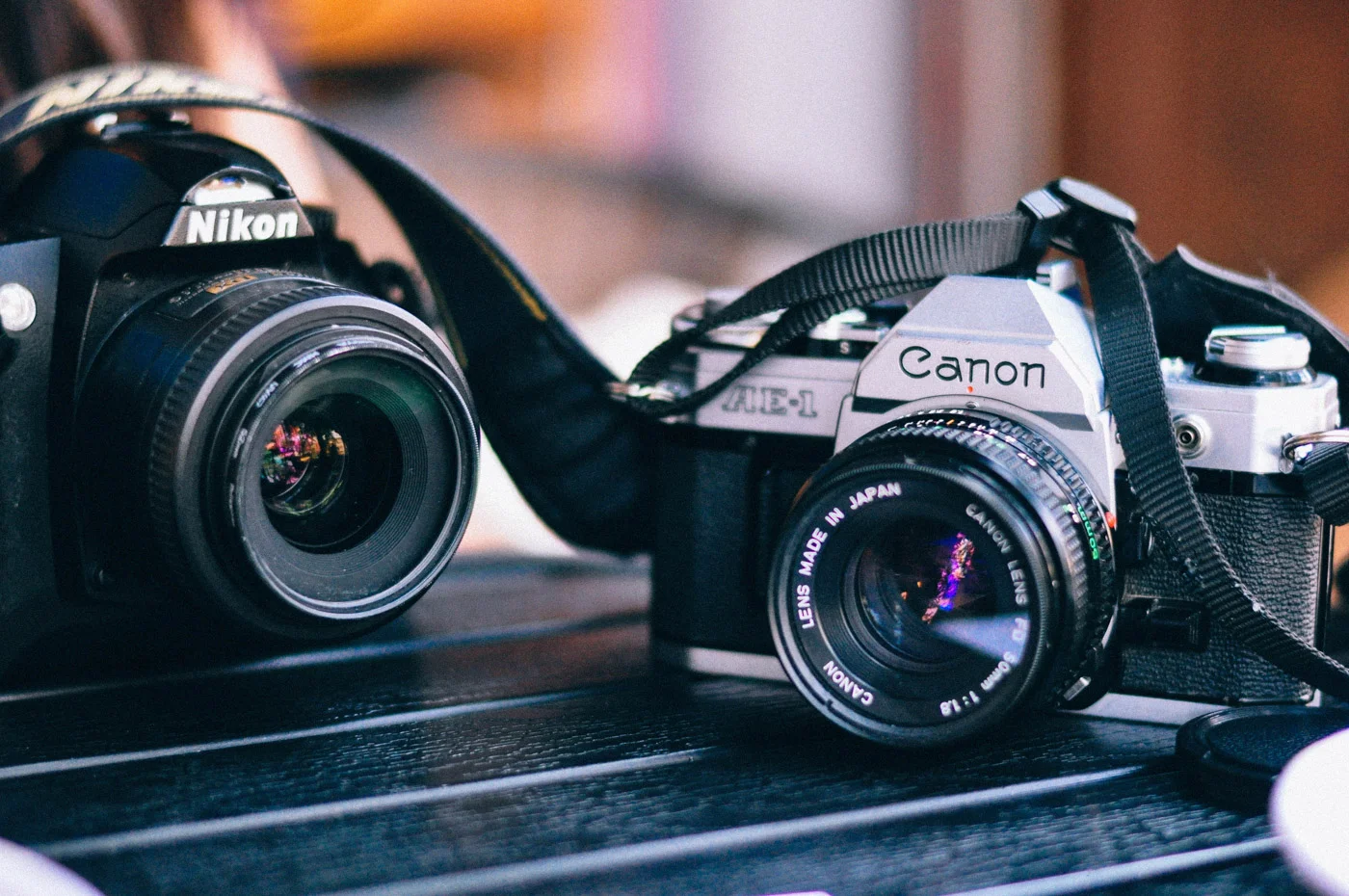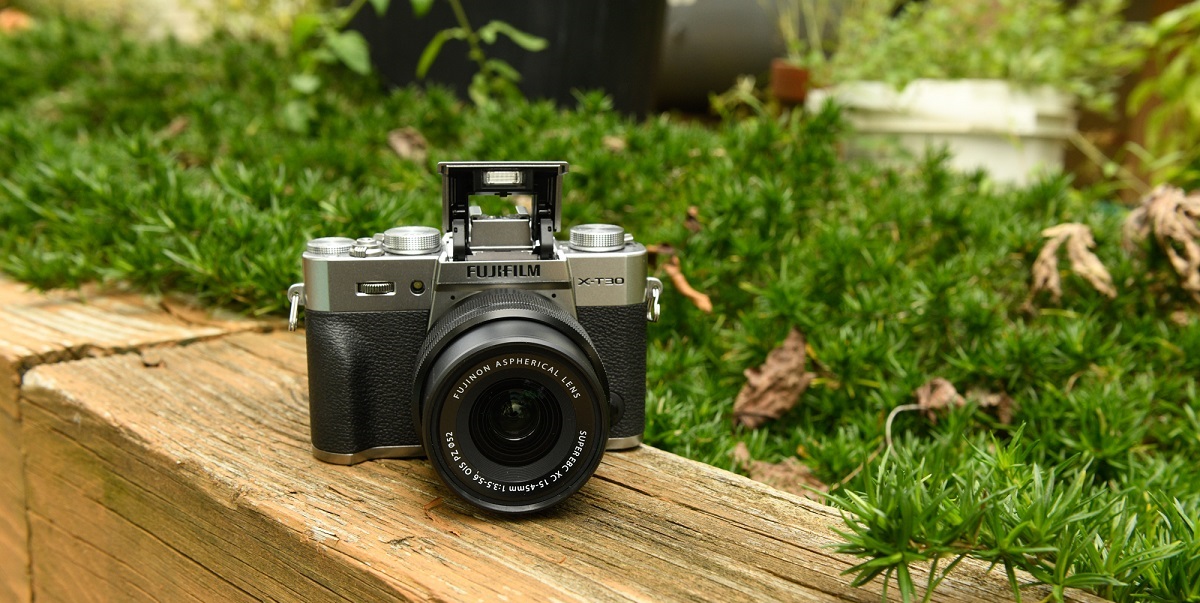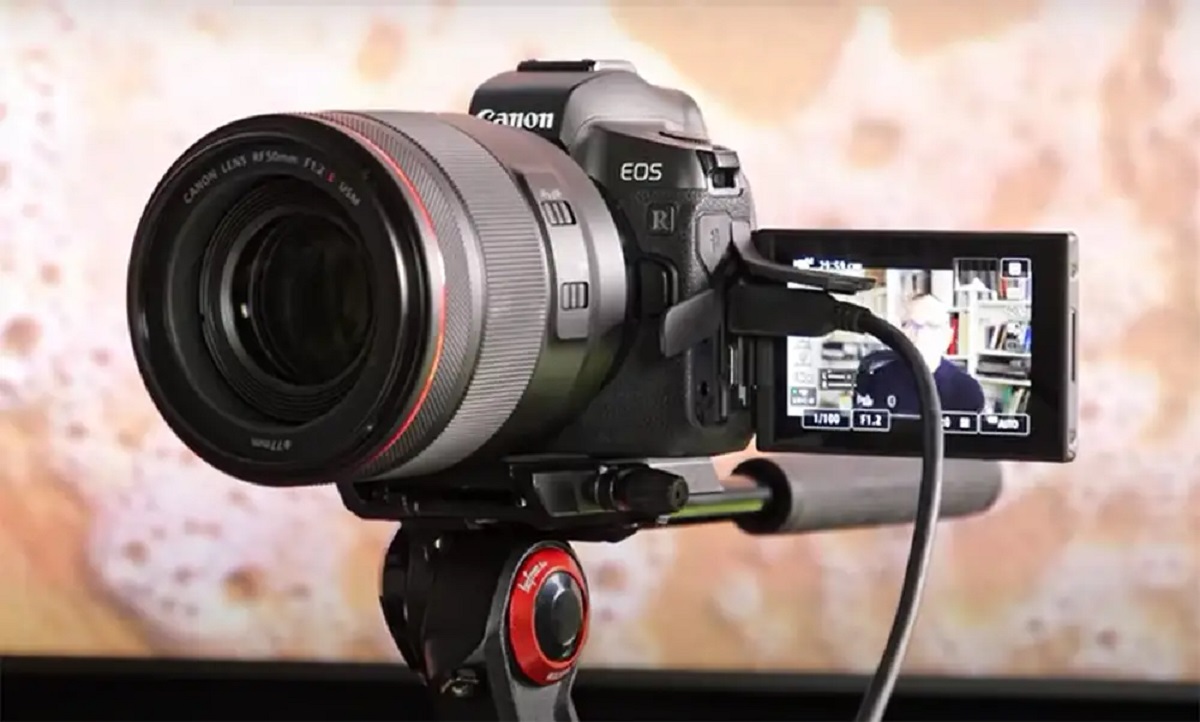Introduction
When it comes to capturing stunning images, the quality of the camera plays a crucial role. With the rise of digital photography, the market is flooded with various digital cameras, each boasting different features and capabilities. If you’re in the market for a new camera or simply want to understand what factors contribute to the quality of images taken with a digital camera, you’ve come to the right place.
While many factors determine the overall image quality, it’s important to note that no single factor alone can guarantee perfect photos. It’s a combination of several elements working together to create stunning visuals. In this article, we will explore the key factors that influence the quality of images taken with a digital camera.
From resolution and sensor size to ISO sensitivity and lens quality, each aspect affects the final output. Additionally, camera settings, lighting conditions, and even post-processing can have a significant impact on the overall image quality. By understanding these factors, you can make informed decisions and take your photography skills to the next level.
Let’s dive into the specific factors that determine the quality of images taken with a digital camera, exploring how each element contributes to capturing breathtaking shots. Whether you’re a photography enthusiast or a professional photographer, this knowledge will be invaluable in your quest for exceptional images.
Resolution
One of the primary factors that determine the quality of images taken with a digital camera is resolution. Resolution refers to the number of pixels contained in an image, typically measured as width x height (e.g., 1920×1080 pixels). The higher the resolution, the more detail and clarity the image will have.
Most digital cameras offer a range of resolution options, allowing you to adjust the pixel count based on your needs. Higher resolution is especially important if you plan to print large-format prints or crop the image extensively while maintaining image quality.
With higher resolution, you can capture more details and create sharper images. This is particularly beneficial when shooting landscapes, architectural structures, or portraits where small details matter. However, it’s important to note that higher resolution images also result in larger file sizes, which may require more storage space.
On the other hand, lower resolution images are suitable for online sharing and small prints, as they have smaller file sizes and can be easily uploaded or emailed without consuming too much bandwidth or storage. However, they may lack the fine details and sharpness that higher resolution images offer.
It’s important to consider the intended use of your images when selecting the resolution. If you primarily share images on social media platforms or view them on electronic devices, a lower resolution may suffice. But if you aim to print your photos or require high-quality images for professional purposes, opting for a higher resolution camera is recommended.
Keep in mind that increasing the resolution alone isn’t a guarantee of better image quality. The quality of the camera’s image sensor, lens, and other factors also contribute to the overall image clarity and sharpness. Therefore, it’s necessary to strike a balance between resolution and other essential features when choosing a digital camera.
Sensor Size
The sensor size is another critical factor that significantly impacts the quality of images taken with a digital camera. The sensor is responsible for capturing the light that enters the camera and converting it into a digital image. A larger sensor size typically results in higher image quality.
When it comes to sensor size, digital cameras generally fall into two categories: full-frame sensors and crop sensors. Full-frame sensors, as the name suggests, have the same size dimensions as a traditional 35mm film frame. Crop sensors, on the other hand, are smaller and have a crop factor, meaning they capture a smaller portion of the scene.
With a larger sensor size, the camera can capture more light, resulting in improved image quality, especially in low-light conditions. This is because larger sensors have larger pixels, which allow for better light sensitivity and reduced noise. As a result, images taken with a camera with a larger sensor will have less noise and greater dynamic range.
In addition to low-light performance, larger sensors also offer shallow depth of field, allowing you to achieve that beautiful blurred background effect, where the subject is in focus and the background is softly blurred. This is particularly desirable for portrait photography or when you want to draw attention to a specific element in the frame.
On the other hand, cameras with crop sensors are typically more affordable and lighter, making them popular choices for beginners or photographers who prioritize portability. While they may not offer the same low-light performance and shallow depth of field as full-frame cameras, they still produce excellent image quality for various types of photography.
When choosing a camera based on sensor size, it’s essential to consider your specific photography needs and budget. If you’re a professional photographer or enthusiast looking for the highest image quality and capability in various shooting conditions, a full-frame camera may be the ideal choice. However, if you’re starting your photography journey or have specific budget constraints, a crop sensor camera can still deliver impressive results.
ISO Sensitivity
The ISO sensitivity of a digital camera plays a crucial role in determining the quality of images, especially in low-light conditions. ISO refers to the sensitivity of the camera’s image sensor to light. It is represented by a numeric value such as ISO 200, ISO 400, etc.
A higher ISO value means a more sensitive sensor, allowing for capturing images in darker environments without the need for longer exposure times. This is particularly beneficial in situations where you cannot use a flash or tripod, such as indoor events or nighttime photography.
However, it’s important to note that increasing the ISO sensitivity also increases the level of digital noise in the image. Noise appears as grain-like artifacts that can degrade the overall image quality. This noise becomes more noticeable at higher ISO values, especially in cameras with smaller sensors.
Modern digital cameras are equipped with advanced noise reduction algorithms that help mitigate the effects of noise at higher ISO settings. However, it’s still advisable to use the lowest possible ISO value to achieve the best image quality. As a general rule, using a lower ISO value produces cleaner, noise-free images with more accurate colors and finer details.
It’s recommended to experiment with different ISO settings to find the ideal balance between capturing enough light and maintaining acceptable image quality. In well-lit environments, using a lower ISO value, such as ISO 100 or ISO 200, will produce sharper, cleaner images. On the other hand, in low-light situations, increasing the ISO, such as ISO 800 or ISO 1600, may be necessary to achieve a properly exposed image.
Additionally, some cameras offer an extended ISO range which allows you to push the limits of sensitivity even further. However, be cautious when using these extended ISO settings as they may result in more noticeable noise and reduced image quality.
By understanding the ISO sensitivity of your camera and how it affects image quality, you can optimize your settings to capture stunning photos in any lighting situation.
Lens Quality
The quality of the lens plays a significant role in determining the overall image quality captured by a digital camera. The lens is responsible for focusing light onto the camera’s sensor, and a high-quality lens can significantly enhance image sharpness, clarity, and detail.
One of the essential factors in lens quality is lens construction. High-quality lenses are typically constructed with premium materials and advanced optical elements that minimize distortions, aberrations, and flares. They are designed to deliver sharpness from the center of the frame to the edges, resulting in images with excellent overall sharpness and consistent image quality across the entire frame.
In addition to construction, the aperture of the lens also plays an important role in image quality. The aperture determines the amount of light that enters the camera, and a wider aperture allows for more light to be captured. A lens with a wider maximum aperture, such as f/1.8 or f/2.8, offers the advantage of better low-light performance, the ability to blur the background, and improved depth of field control.
Moreover, lens quality also affects factors like chromatic aberration, distortion, and vignetting. Chromatic aberration refers to color fringing or color bleeding in high-contrast areas of an image, and high-quality lenses are designed to minimize this effect. Distortion, on the other hand, refers to the bending or warping of straight lines, and a good lens will have minimal distortion. Vignetting is the darkening of the corners of an image, and while it can be corrected in post-processing, higher quality lenses tend to have less vignetting.
It’s important to note that the lens you choose is just as important, if not more, than the camera body itself. A high-quality lens can make a significant difference in image quality, even when used with an entry-level camera. Investing in good lenses that are compatible with your camera system can elevate your photography to new heights.
When considering lens quality, it’s worth researching and investing in lenses from reputable manufacturers known for their optical excellence. While these lenses may come with a higher price tag, they deliver superior image quality, sharpness, and color reproduction that can make a noticeable difference in your photographs.
Remember, good lens quality combined with other factors like camera resolution and sensor size can produce images with exceptional clarity and detail, taking your photography to the next level.
Shutter Speed and Aperture
Two key camera settings that significantly impact the quality of images taken with a digital camera are shutter speed and aperture. These settings control how light enters the camera, influencing exposure, depth of field, and motion blur.
Shutter speed refers to the length of time that the camera’s shutter remains open, allowing light to reach the sensor. A faster shutter speed, such as 1/1000th of a second, freezes motion and is ideal for capturing fast-moving subjects or when shooting in well-lit conditions. On the other hand, a slower shutter speed, like 1/30th of a second, allows light to enter the camera for a longer duration, resulting in motion blur. This can be used creatively to convey a sense of movement or capture long-exposure shots.
The aperture, measured in f-stops such as f/2.8 or f/5.6, controls the size of the lens opening. A wider aperture (lower f-stop number) allows more light to enter the camera, while a smaller aperture (higher f-stop number) restricts the amount of light. In addition to influencing exposure, the aperture also determines the depth of field, which refers to how much of the image appears in focus. A wide aperture (e.g., f/2.8) creates a shallow depth of field, blurring the background and drawing attention to the subject. A narrow aperture (e.g., f/16) results in a deeper depth of field, keeping more elements in the frame in focus.
Both shutter speed and aperture settings have a direct impact on image quality. A faster shutter speed helps in capturing sharp images, especially when photographing moving subjects, while a slower shutter speed can create artistic effects but may require the use of a tripod to avoid camera shake.
Similarly, the choice of aperture affects the overall image quality. While lenses typically have an optimal aperture range where they perform their best, using extremely wide or narrow apertures may result in reduced image sharpness or lens diffraction. It’s advisable to test your lenses at different apertures to find the sweet spot where they provide maximum sharpness and clarity.
Understanding how shutter speed and aperture work together allows you to have better control over exposure and depth of field in your photographs. By experimenting with different settings and mastering the interplay between the two, you can achieve the desired image quality and creative effect for each shot.
Image Stabilization
Image stabilization is a vital feature found in many digital cameras and lenses that helps reduce the effects of camera shake, resulting in sharper and clearer images. Camera shake commonly occurs when shooting handheld, especially at slower shutter speeds or when using longer focal lengths. It can lead to blurry or slightly out-of-focus images.
There are two main types of image stabilization: optical and digital. Optical image stabilization utilizes floating lens elements or a moving sensor to compensate for camera movement and vibrations. This physical movement helps to counteract any unintentional shaking, resulting in sharper images.
Digital image stabilization, on the other hand, compensates for camera shake by using electronic algorithms to analyze and process the image data. This is particularly useful in smartphones and compact cameras that may not have built-in mechanisms for physical lens or sensor movement. While digital image stabilization can help in reducing camera shake, it’s generally not as effective as optical stabilization in maintaining image quality.
Image stabilization technology has evolved significantly over the years, and many cameras now offer advanced forms of stabilization. Some systems utilize a combination of optical stabilization and digital stabilization to achieve optimal performance.
Image stabilization is particularly useful in low-light situations, as it allows photographers to use slower shutter speeds without worrying about camera shake. It also comes in handy when shooting with longer focal lengths, which are more susceptible to shake-induced blur. Whether you’re capturing handheld photos, shooting videos, or shooting in challenging shooting conditions, image stabilization can help you achieve clearer and sharper results.
It’s important to note that image stabilization is not a substitute for using proper shooting techniques. While it can help compensate for minor camera movements, it’s always best to use a tripod or stable surface whenever possible, especially in situations where longer exposure times or telephoto lenses are being used.
When considering a camera or lens with image stabilization, it’s essential to understand the specific type and effectiveness of the stabilization system. Different manufacturers may have their own proprietary systems, each with its advantages and limitations.
In summary, image stabilization is a valuable feature that significantly contributes to the image quality by minimizing the effects of camera shake. Whether through optical or digital means, this technology enables photographers to capture sharper and clearer images in various shooting conditions.
Camera Settings
When it comes to capturing high-quality images with a digital camera, understanding and utilizing the different camera settings is of utmost importance. These settings allow photographers to have greater control over exposure, white balance, focus, and various other aspects that influence the overall image quality.
One of the most fundamental camera settings is exposure, which is determined by the combination of shutter speed, aperture, and ISO sensitivity. By adjusting these settings, photographers can fine-tune the exposure to achieve the desired level of brightness or darkness in their images. Understanding the relationship between these settings and their impact on image quality is crucial for capturing well-exposed photos.
White balance is another essential camera setting that affects the color temperature of the image. Different lighting conditions can have varying color casts, and setting the white balance appropriately ensures accurate color representation. While the camera’s auto white balance can work well in certain situations, manually adjusting the white balance or using preset options can yield more accurate and pleasing color results.
Focus settings play a significant role in determining the sharpness and clarity of an image. Cameras offer various autofocus modes, such as single-point autofocus, continuous autofocus, or manual focus. Choosing the appropriate focus mode for the subject and situation can make a significant difference in the overall image quality. Additionally, using focus tools like focus peaking or magnification can help ensure precise focusing, particularly in situations where critical focus is essential.
Other camera settings, such as shooting mode (e.g., manual, aperture priority, shutter priority, program), metering mode, and white balance bracketing, all contribute to image quality and creative control. Each photographer may have their preferred settings based on their shooting style and subject matter. Experimenting with different combinations of settings will help you discover the best approach to capturing high-quality images that align with your artistic vision.
Furthermore, exploring and utilizing the camera’s additional features, such as exposure compensation, histograms, RAW file format, and image size/quality settings, can further enhance image quality. These settings allow photographers to fine-tune exposure, capture more image data, and maximize the available image resolution.
It’s important to remember that mastering camera settings takes time and practice. Understanding the technical aspects underlying each setting and how they interact with one another is crucial for achieving the desired image quality. Regularly experimenting with different settings in different shooting conditions will help you become more comfortable and proficient in utilizing your camera’s capabilities to their fullest extent.
Ultimately, being knowledgeable about the various camera settings and their impact on image quality empowers photographers to have more control and creativity in capturing exceptional images.
Lighting Conditions
Lighting conditions play a crucial role in determining the quality of images taken with a digital camera. The amount, direction, and quality of light can have a significant impact on exposure, contrast, color rendition, and overall mood of the photograph. Understanding how different lighting conditions influence image quality is essential for capturing stunning and well-balanced photos.
One of the primary considerations in lighting conditions is the intensity or brightness of the light. Bright, natural daylight provides ample light for capturing vibrant and well-exposed images. Under such conditions, the camera’s sensor can capture a wide range of tones, resulting in photos with excellent detail and dynamic range.
On the other hand, shooting in low-light conditions introduces challenges such as reduced visibility, increased noise, and slower shutter speeds. To overcome these limitations, it’s essential to utilize techniques like increasing ISO sensitivity, using a wider aperture, or employing artificial lighting to ensure proper exposure and minimize noise.
The direction of light also plays a crucial role in image quality. Front lighting, where the light source is positioned directly in front of the subject, tends to result in evenly illuminated images with fewer shadows. This is ideal for capturing details and minimizing contrast. Side lighting, where the light source is positioned to the side of the subject, creates more dramatic shadows, highlighting textures and adding depth to the image. Backlighting, where the light source is positioned behind the subject, can create a beautiful halo effect and add a sense of depth and dimension to the photograph.
Another important factor to consider is the color temperature of the light. Different light sources emit light with varying color casts, which can affect the color rendition of the image. For instance, daylight has a cool color temperature, while incandescent light has a warm color temperature. Understanding how to adjust white balance settings or utilize appropriate filters can help ensure accurate color reproduction in different lighting conditions.
The quality of light also impacts image quality. Soft, diffused light, such as on an overcast day or when using a light modifier like a softbox or umbrella, creates even and flattering illumination, minimizing harsh shadows and highlights. In contrast, harsh, direct light, like in midday sunlight, can result in strong contrasts and deep shadows, requiring careful exposure control and consideration of creative techniques like silhouette photography.
Understanding how lighting conditions affect image quality empowers photographers to adapt their shooting techniques, utilize appropriate equipment, and make creative decisions that capture the scene in the best possible way. By observing and manipulating light effectively, photographers can create visually striking and impactful images.
Post-processing
Post-processing is an essential aspect of digital photography that can greatly enhance the quality and impact of your images. It involves editing and enhancing the captured photos using software tools to refine exposure, color balance, sharpness, and other elements to achieve the desired final result.
One of the primary benefits of post-processing is the ability to correct any exposure issues that might have occurred during the shoot. This includes adjusting the brightness, contrast, and highlights to bring out the details in both the shadows and the highlights. Fine-tuning the exposure can significantly improve the overall image quality and ensure accurate representation of the scene.
Color correction is another crucial aspect of post-processing. It allows you to adjust the white balance, saturation, and hue to create a more visually appealing and accurate representation of the original scene. You can also make selective color adjustments to enhance or mute specific colors, creating a more impactful image.
Post-processing also provides opportunities to enhance image sharpness and clarity. Tools like sharpening filters and noise reduction algorithms allow you to reduce any unwanted grain or noise in the image, resulting in a cleaner and crisper final result. Additionally, you can selectively sharpen specific areas of the image to draw attention to important details.
Creative editing techniques can be applied during post-processing to add artistic flair to your images. This includes applying filters, adjusting the tone curve, or adding vignettes to create a specific look or mood. Post-processing also allows you to crop and straighten the image, removing any distractions and guiding the viewer’s focus to the main subject.
When it comes to post-processing, it’s important to strike a balance and avoid over-editing. While editing can enhance image quality, excessive adjustments can lead to unnatural-looking photos. It’s crucial to maintain a realistic and authentic representation of the scene while enhancing it to bring out its best qualities.
Furthermore, it’s recommended to shoot in RAW format, as it provides greater flexibility during post-processing compared to JPEG. RAW files contain more image data, allowing for more precise adjustments without loss of quality. This is particularly beneficial when dealing with exposure compensation, white balance adjustments, and recovering details in highlights and shadows.
Post-processing is a personal and creative process that allows photographers to add their own artistic touch and style to their images. It’s important to develop your own editing workflow and experiment with different techniques to find what works best for you and the particular type of photography you engage in.
Remember, post-processing should be seen as a tool to enhance the quality and impact of your images, not as a means to fix fundamentally flawed photographs. A well-captured image forms the foundation for an excellent post-processing result.






















